The 2021 Head On Photo Festival‘s shift to ‘Covid normal’ rendering it a mostly outdoor and online affair, with a major venue shuffle to the iconic Bondi Beach, from Paddington galleries. It’s a change of scene, but who could complain about a photo festival by the sea on the verge of summer?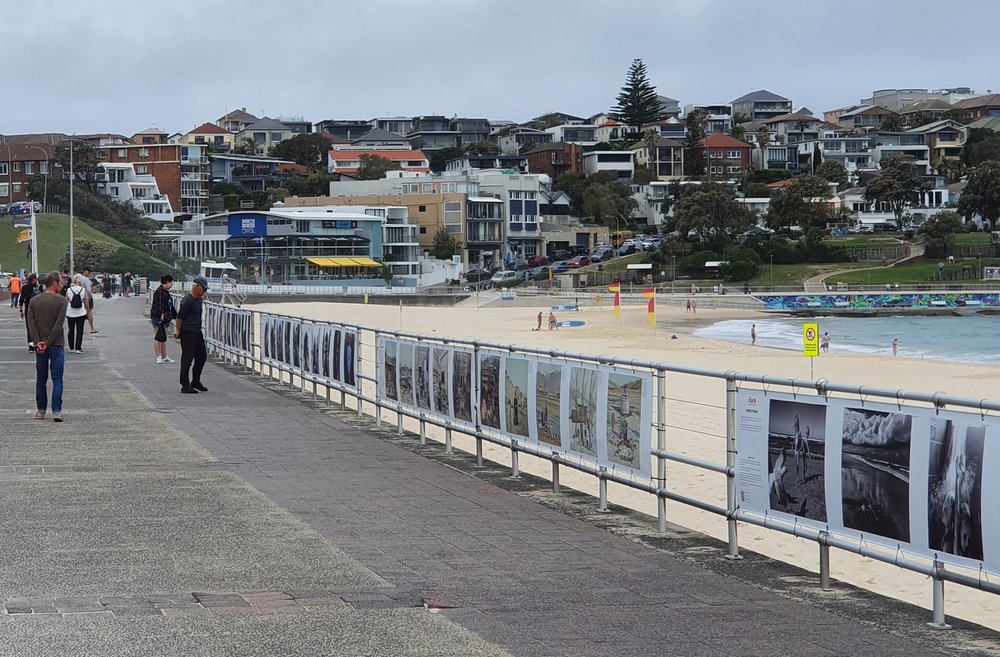
The festival consists of exhibitions showing across Sydney for just over a week, as well as an online program including live streamed events, such as artist talks and workshops. A week feels a tad short, especially when the cruel La Nina weather gods sent down biblical rains for two of the six days that Inside Imaging was in town. But after endless Victorian lockdowns, Sydney’s muggy sub-tropical weather was acceptable – pleasant, even – and Head On was a perfect excuse for an interstate excursion.
UPDATE: Head On has been extended, with the Bondi installation open until the end of January 2022, and Paddington Reservoir Gardens open until December 19.
Pre-Covid, Head On combined the Paddington Town Hall with the open air Paddington Reservoir Gardens, along with other adjacent venues like Juniper Hall, to create a condensed festival zone along Oxford Street. This approach made it effortless to get around to see a healthy portion of the festival program in just one day, and drift in and out of artist talks.
This year there is no Town Hall Festival Hub. However the Reservoir Gardens remain a major venue, housing some of the more challenging and confronting work, although the majority of the Featured Program spans the 1km Bondi Beach promenade.
There are 52 exhibitions at Bondi – hundreds of pictures zip-tied to the fence railing which separates the concrete city from Bondi’s golden sand. This strip enjoys the area’s heaviest foot traffic by far, and is a great score for the Aussie photo festival. It has likely exposed photography to a larger audience than any other location in Head On’s history.
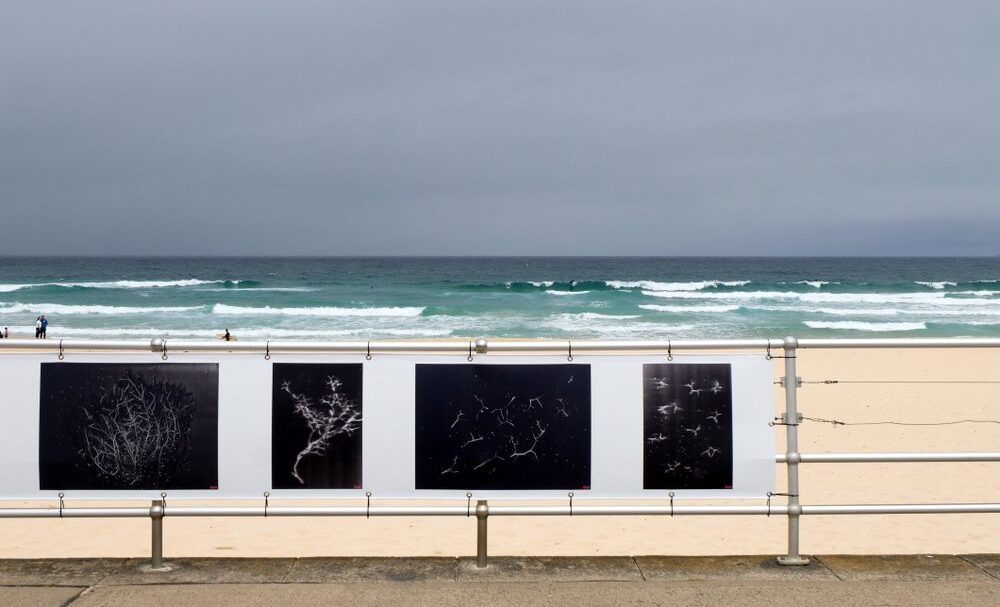
And if Les Rencontres d’Arles is unashamedly French by showcasing photography in the city’s historic chapels and down cobbled streets, Head On is quintessentially Australian by bringing photography to the country’s most famous beach. Bronzed bodies slumped on the beach is part of Australian culture. Max Dupain made sure of this back in 1937. So it’s fitting to have the lead venue a frisbee throw or volley ball serve from the water’s edge.
The Bondi public installation may be one of the largest – or longest – public installations of photography in Australia. It’s worth noting the photography is accessible, with diverse styles to please the average punter. By offering a smorgasbord of photography, Head On isn’t catering to just one crowd. Some projects push a political or social message, others are simply fun eye candy. And then there is everything in between, from abstract photo art to documentary series exploring various quirks of humanity, our built world or the wonders of nature. This diversity is what separates Head On from other photo festivals, which lean hard into the more elite fine art space without catering to a broader audience.
There is a downside to the promenade, and public spaces in general compared with indoor galleries. It’s the tendency to move through it quickly to match the surrounding environment. It’s not a big deal, but the less intimate viewing experience makes it easier to stroll past some photos, whereas at a gallery everyone moves at a slower pace.
For Inside Imaging, here a few highlights from Bondi:
Chinese freelance photographer, Qingjun Huang, asked for portrait participants from across China to schlep out everything they’ve ever brought online and display it. The result, Online Shopping Family Stuff, is a series of environmental home portraits that benefit from Huang’s de-saturated colour palette. It’s an interesting social experiment exploring consumption, and people’s varied online buying habits. With a wide variety of portrait subjects from China’s expansive regions, including various minority groups, the series has a touch of anthropological fieldwork to it.
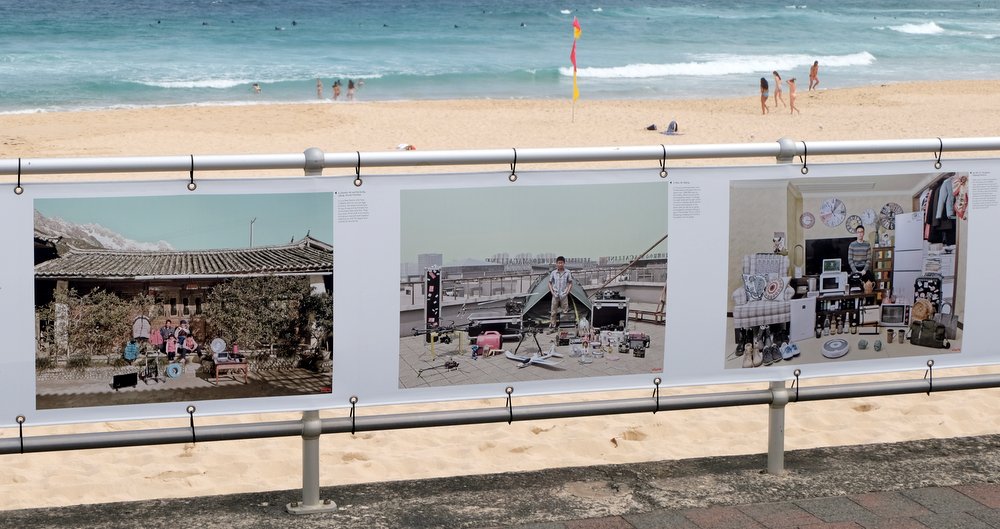
Next door is Natalie Grono’s Invisible Threads, a series of monochrome pictures of her two children being weird little humans having fun. Most photos are taken nearby a body of water, and Grono masterfully handles light and shadows to candidly explore the innocence of youth.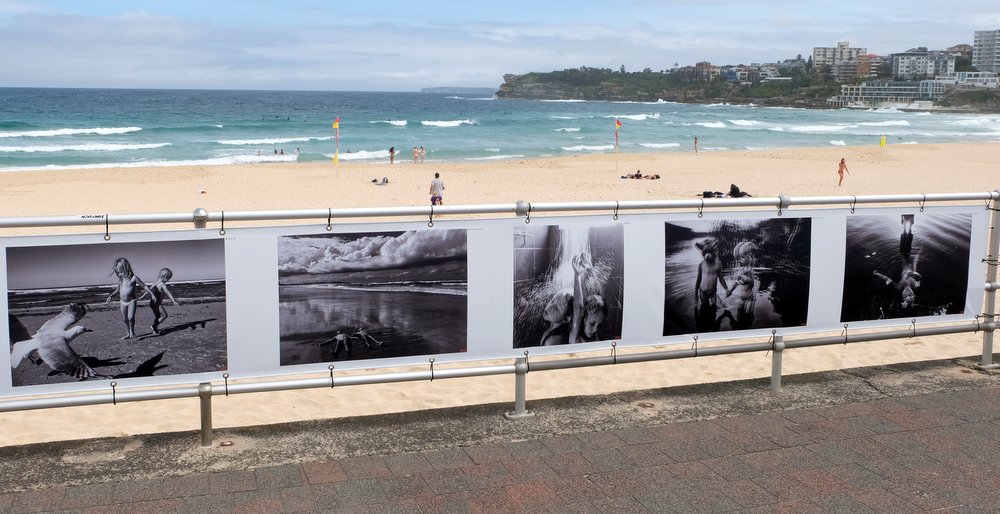
Another captivating series is The People Of The Forest by US photographer, Mark Edward Harris. Studio portraits of orangutans! Photographing the great apes in a studio doesn’t come across as particularly original, but Harris’ portraits are hauntingly human. The depth within the orangutans’ eyes narrows the bridge between us and them, showing a complexity to these endangered creatures, and the tragic backdrop is how humanity is destroying their ancient forest cities. Out of all the photography on show, this series was stopping most people in their tracks.

The Sony Alpha Awards Finalist exhibition is also welcome easy viewing, with the photos demonstrating the powerful capabilities of Sony cameras. One half of the Inside Imaging team commented ‘these photos are just so… “Sony”’. Kudos to Sony for being Head On’s major sponsor – a firm commitment to celebrating and supporting photography.
These are just four exhibitions of 52 at Bondi. Many more deserve a mention, such as Yoshitaka Taniguchi’s Orwellian dystopian landscapes showing huge Japanese concrete tsunami seawalls in The Windows Of The Seawall; Alain Schroeder’s portraits of Grandma Divers from Jeju Island in South Korea; Tom Goldner’s charred landscapes in Do Brumbies Dream In Red?; along with another series touching on climate change but in the polar regions, Michaela Skovranova’s End Of The World; Johannes Reinhart’s surreal monochrome series Dreaming Of Mermaids; and Daniele Vita’s Italian youth kissin’ and smokin’ by the beach in Bagnanti.
Just about everyone walking the length of the Bondi promenade is likely to pass something that resonates with them. Okay, maybe not everyone. This is Bondi, now home to the self-important trust fund Millennial elite – a one-dimensional breed of active wear aficionados who could spend the entire art walk glued to Instagram, unaware they’re passing a much more interesting feed of visual content.
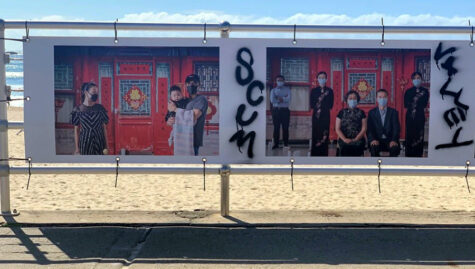
Bondi wasn’t always this way. It was once labelled ‘Scum Valley’ by local surfers, thanks to storm water flowing freely into the ocean, turning it a dull grey/brown with ear infections aplenty to those game enough to take the plunge. (‘Bondi Cigars’ isn’t just the name of a local pub band!) A graffiti vandal felt it was necessary to remind people where they were by tagging ‘Scum Valley’ on Horace Li’s The Journey Home, a series showing Chinese migrant family portraits.
Li suspects the vandal’s agenda was rooted in racism as it was only his series that copped the graffiti. While Li certainly has good reason to believe this is the case, Scum Valley was a more multicultural, multi-class community with affordable housing. Perhaps rather than racism, the vandals intent was classism, as Bondi is the epitome of coastal gentrification? We may never know.
Rats, naked bodies, and gangstas
Just a short bus ride back up the hill to Paddington is the Reservoir Gardens, where crowds seeking more confronting photography are better served. Hard-hitting photojournalism and pictures showing graphic nudity have been strategically positioned in the dusty underground lower chamber to exercise discretion.
Of course there are major accessible draw cards, such as the Head On Portrait Award finalist exhibition, the foundation of the festival and an awesome curation of photographic portraiture. Another is a new initiative, First Sight, a mentorship program by Head On to develop and promote the careers of emerging First Nations photographers.
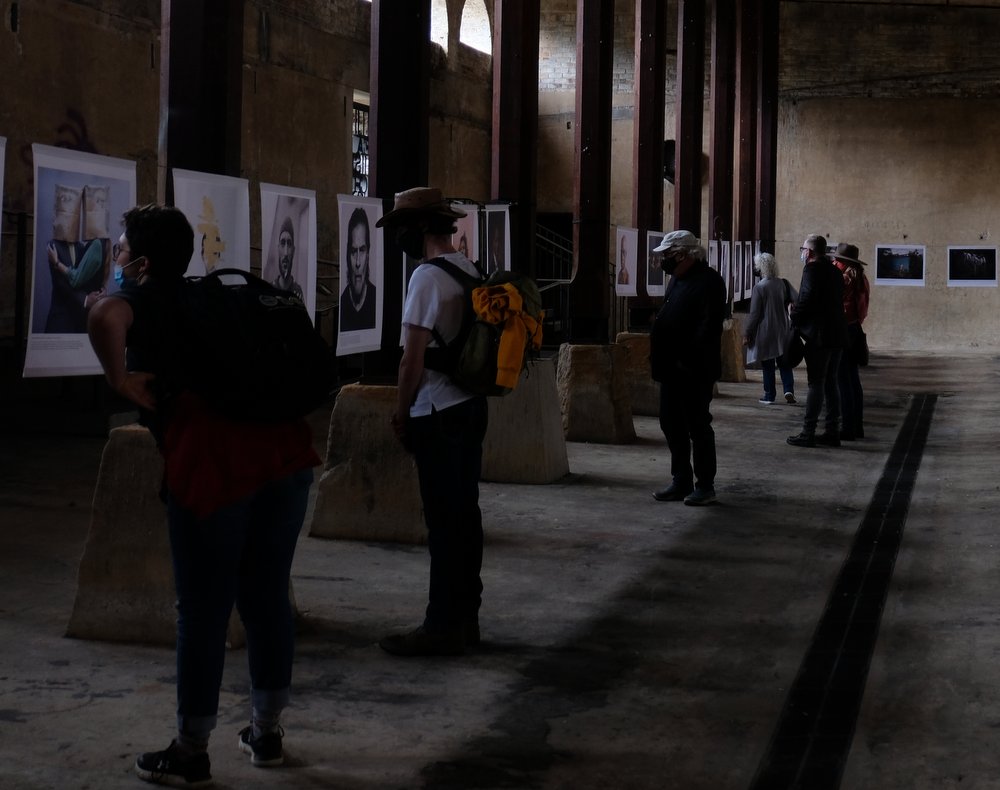
UK photographer Tariq Zaidi was welcomed back after showing the shimmering Sapeurs Portraits series in 2019. This time around Zaida has a darker project, El Salvador – A Nation Held Hostage, which includes striking documentary photos of overcrowded prison cells full of heavy-looking incarcerated gangstas covered head-to-toe in tattoos.
‘El Salvador is widely regarded as the deadliest place on earth that is not a war zone, but it may as well be one,’ writes Zaidi for Foreign Policy. ‘The gang culture that has evolved since the end of the 12-year-long civil war in 1992 is unmatched for its brutality and scale of violence. The country’s defense ministry estimates that as many as 500,000 Salvadorans are involved in gangs—in a country of 6.5 million—either through direct participation or through coercion and extortion by relatives, amounting to 8 percent of the population.’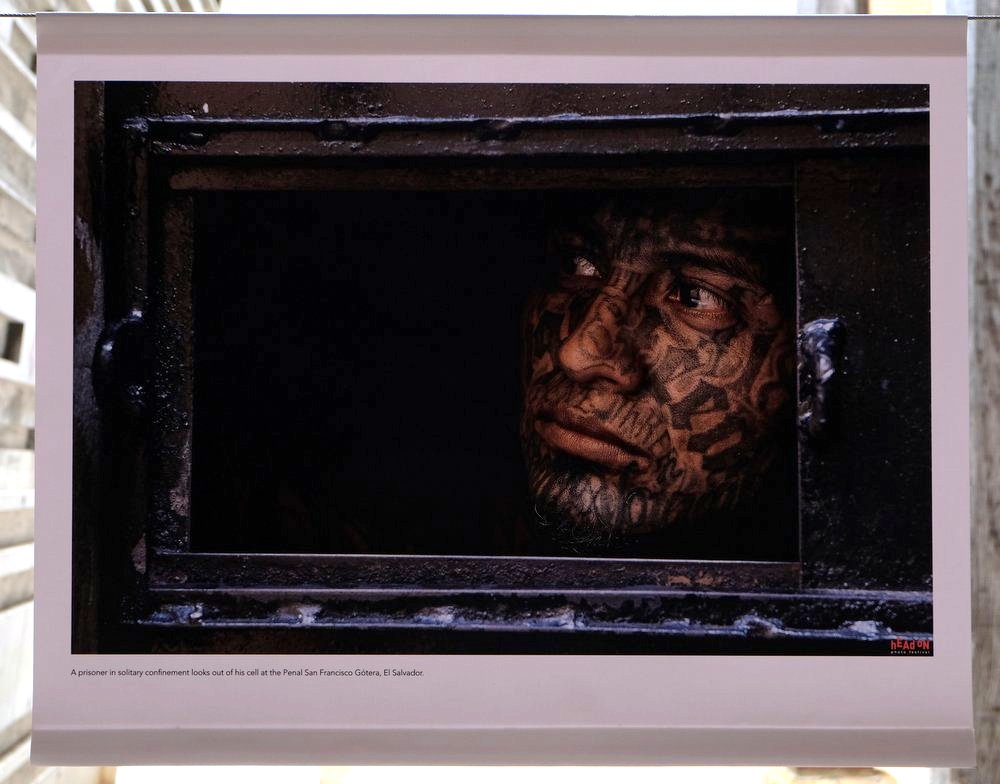
Roger The Rat, a new series by South African-based contemporary photographer, Roger Ballen, is on the weirder end of the spectrum. Ballen’s own style – ‘Ballenesque’ – is known for being absurdist, humorous at times, and generally a bit creepy. The Rat is a Nosferatu-like character, and the pictures are shot on a set and possess a cinematic quality. If it were a film it’d be an eerie old silent film shot at 16 fps, where everything looks jittery and sped up. According to Ballen, Roger the Rat is devoid of manners and acts purely on subconscious emotions – he’s the human ID: ‘A reflection of that human instinctual type of behaviour that people can’t act on, and might act out in their own minds, but not reveal what they’re really thinking or feeling’.
Inside Imaging found this crucial info out after the fact by looking it up, having only brushed past the project description without taking much notice. The pictures are carefully produced with extreme attention to minor details, including ‘Ballenesque’ monster scribbles on walls in the background. The nightmare world of Roger The Rat is an enjoyable trip, but clearly keeping the ID suppressed is better for everyone. 
A different kind of success
Head On has moved the majority of the events online, including most of the artist talks which are live streamed to a schedule. This is partly because of travel restrictions. It also allows the festival to have an audience beyond Sydney to emulate the success of last year’s Head On(line). Wanting to make the most of Sydney, Inside Imaging didn’t manage to lock in any artist talks, despite them being an insightful and engaging addition to the festival.
So that’s Head On for another year. A delightful celebration of photography that showcases the full gamut of the craft, carefully conjured up by a small team who have enough runs on the board to finally receive more adequate government funding than ever before.
It’s an event that once-again proves how to seamlessly adapt with the times. As restrictions slowly lift, Head On strikes an ideal balance between the old times and the new pandemic-era zeitgeist. The timing was pretty lucky. A month earlier and it might have shifted fully online again. A month later, and Omicron panic might have resulted in another setback.
– Will Shipton





Hi Will! Greetings from the US! I appreciate your kind words about my orangutan series as well as the great photo of the additional display. Could I post it on my Instagram? @MarkEdwardHarrisPhoto
I’ll give you credit.
Thanks!!
Mark